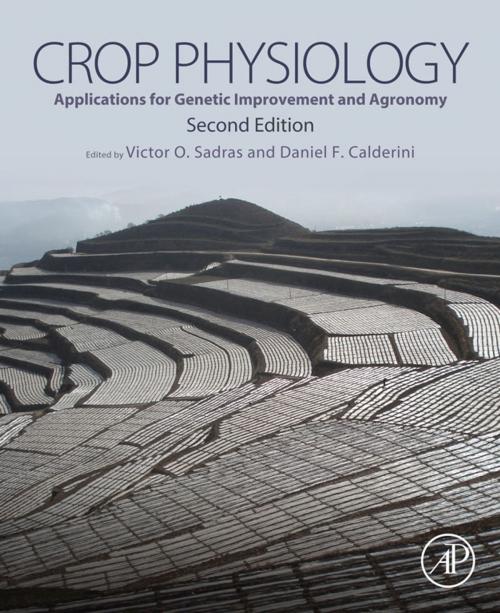Crop Physiology
Applications for Genetic Improvement and Agronomy
Nonfiction, Science & Nature, Technology, Agriculture & Animal Husbandry, Science| Author: | Daniel Calderini, Victor Sadras | ISBN: | 9780124169791 |
| Publisher: | Elsevier Science | Publication: | September 17, 2014 |
| Imprint: | Academic Press | Language: | English |
| Author: | Daniel Calderini, Victor Sadras |
| ISBN: | 9780124169791 |
| Publisher: | Elsevier Science |
| Publication: | September 17, 2014 |
| Imprint: | Academic Press |
| Language: | English |
From climate change to farming systems to genetic modification of organisms, Crop Physiology, Second Edition provides a practical tool for understanding the relationships and challenges of successful cropping. With a focus on genetic improvement and agronomy, this book addresses the challenges of environmentally sound production of bulk and quality food, fodder, fiber, and energy which are of ongoing international concern. The second edition of Crop Physiology continues to provide a unique analysis of these topics while reflecting important changes and advances in the relevant science and implementation systems.
Contemporary agriculture confronts the challenge of increasing demand in terms of quantitative and qualitative production targets. These targets have to be achieved against the background of soil and water scarcity, worldwide and regional shifts in the patterns of land use driven by both climate change and the need to develop crop-based sources of energy, and the environmental and social aspects of agricultural sustainability.
- Provides a view of crop physiology as an active source of methods, theories, ideas, and tools for application in genetic improvement and agronomy
- Written by leading scientists from around the world
- Combines environment-specific cropping systems and general principles of crop science to appeal to advanced students, and scientists in agriculture-related disciplines, from molecular sciences to natural resources management
From climate change to farming systems to genetic modification of organisms, Crop Physiology, Second Edition provides a practical tool for understanding the relationships and challenges of successful cropping. With a focus on genetic improvement and agronomy, this book addresses the challenges of environmentally sound production of bulk and quality food, fodder, fiber, and energy which are of ongoing international concern. The second edition of Crop Physiology continues to provide a unique analysis of these topics while reflecting important changes and advances in the relevant science and implementation systems.
Contemporary agriculture confronts the challenge of increasing demand in terms of quantitative and qualitative production targets. These targets have to be achieved against the background of soil and water scarcity, worldwide and regional shifts in the patterns of land use driven by both climate change and the need to develop crop-based sources of energy, and the environmental and social aspects of agricultural sustainability.
- Provides a view of crop physiology as an active source of methods, theories, ideas, and tools for application in genetic improvement and agronomy
- Written by leading scientists from around the world
- Combines environment-specific cropping systems and general principles of crop science to appeal to advanced students, and scientists in agriculture-related disciplines, from molecular sciences to natural resources management















